Astilboides: description and agricultural technology
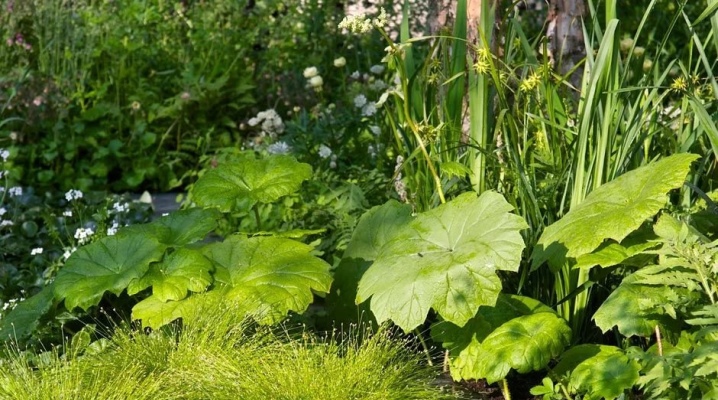
Landscape design is a popular trend in the field of landscape architecture, which is becoming more and more in demand and popular every year. Specialists in this field are involved in landscaping not only private adjoining territories, but also city parks and alleys. The long and painstaking work of breeders and botanists has led to the emergence of a huge number of varieties of ornamental plants, most of which prefer fertile and sunny areas.
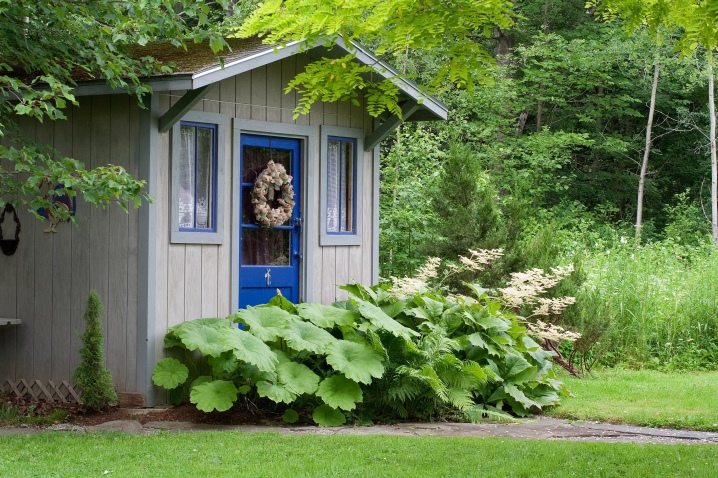
Decorating an area that is in the shade most of the day is not an easy task. It can be very problematic to find flowers for a given area. It is in such cases that florists recommend paying attention to the unusual Astilboides plant, which not only loves shade and moisture, but also surprises with the size of its leaves and the appearance of flowers.
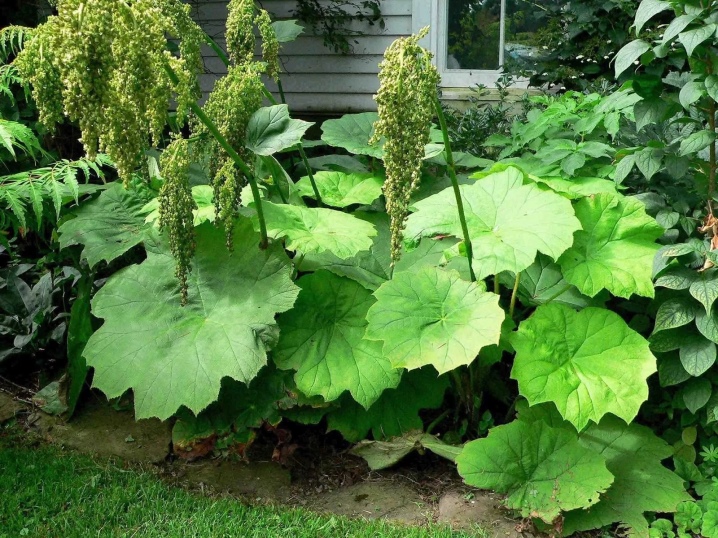
Description
Astilboides tabularis (astilboides tabularis) is an unusual plant that grows naturally in shady and humid forests, near water bodies, as well as in ravines and on slopes. The homeland of this flower is China, Korea and Manchuria.
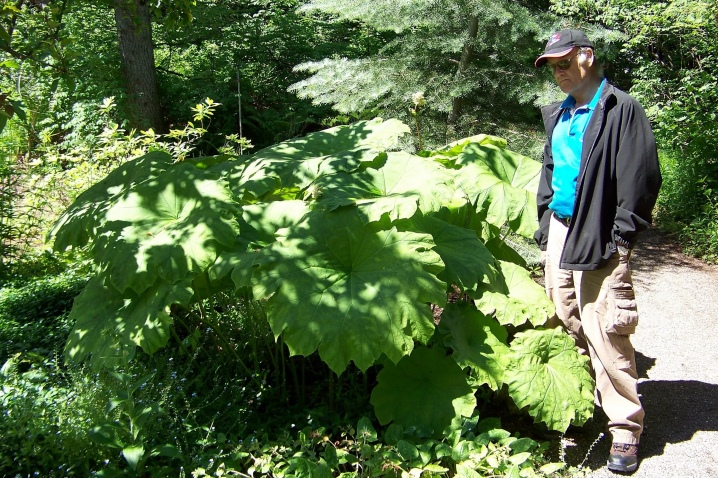
Initially, the flower belonged to the Stonefragment family, but after a while this plant was assigned to the genus of the same name Astilboides, in which it is the only representative.
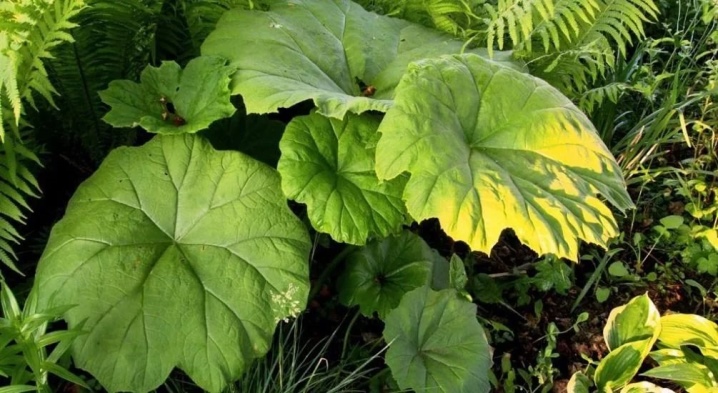
Astilboides is a herbaceous perennial plant that is impressive in size and intended for outdoor cultivation. The maximum leaf size in an adult plant can reach 150 cm, and the height of the stems exceeds 120 cm.
A distinctive feature of the leaves is the presence of a fleecy surface and torn needle-like edges in the form of a fringe, as well as their rigid and elastic structure.
The leaf plate is painted in a bright green hue, against the background of which lighter veins look especially impressive.
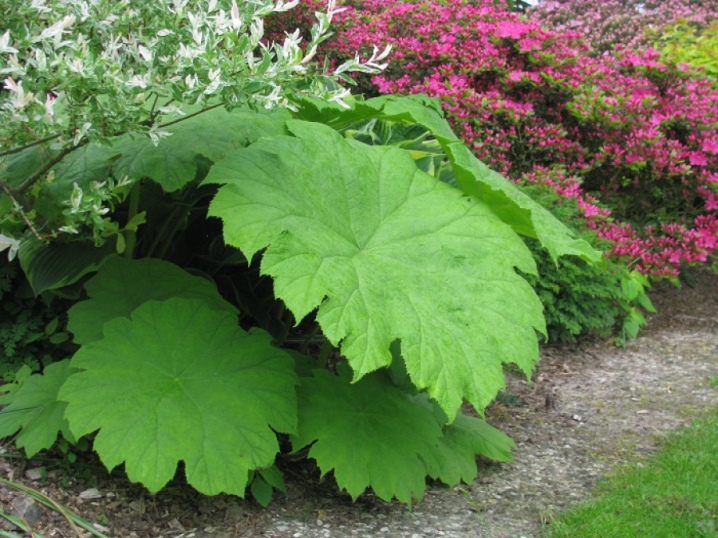
Particular attention must be paid to the flowers of this plant, which can be white, beige and yellow.
The bell-shaped flowers are collected in very large inflorescences, the height of which can reach 170 cm. The flowering period is mid-summer. The plant will delight its owners with flowers for a whole month.
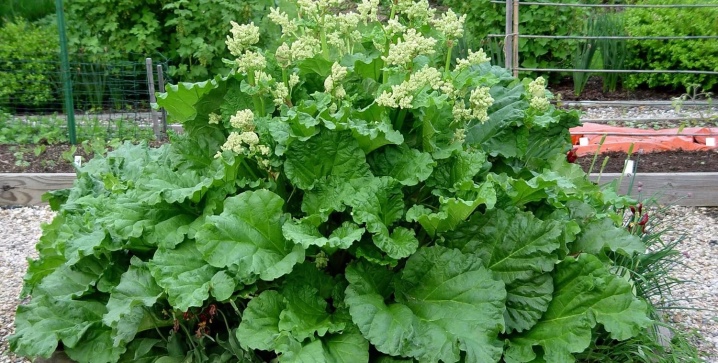
Despite the beauty of the inflorescences, they practically do not emit a scent. After the flowers wither, seeds appear in their place, which can subsequently be effectively used for propagation. The length of the superficial root system reaches 35 cm, and the thickness of the roots is 30 mm.
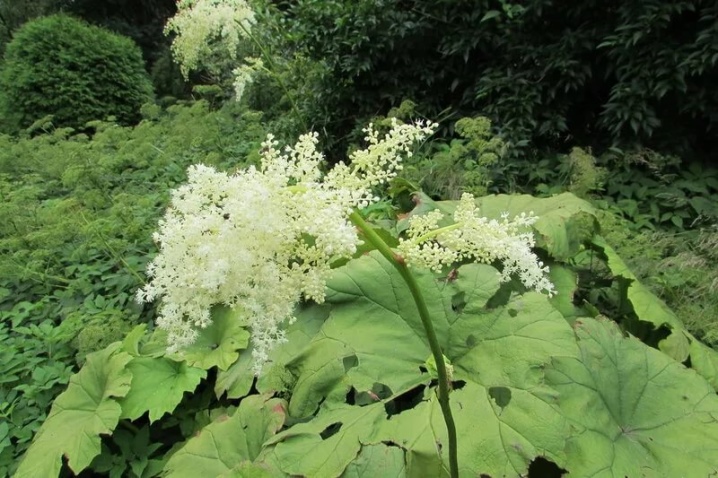
Landing scheme
Astilboides is a moisture-loving plant that does not tolerate drought. If the soil near the flower is subject to frequent drying out, then it will not be able to form inflorescences and will grow very slowly. In connection with these features of growth, experts recommend paying special attention to the choice of a planting site, which should be maximally protected from direct sunlight and have constantly moist soil.
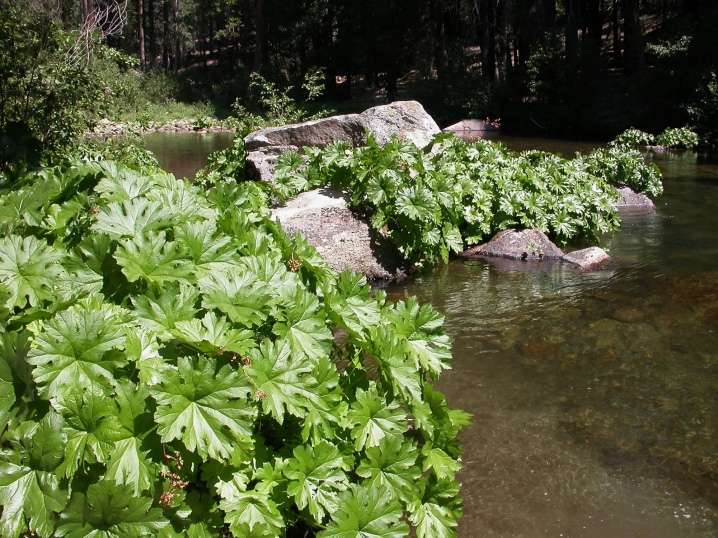
Novice gardeners should definitely understand that this flower is a very large plant.therefore requires a lot of free space. The flower acquires its maximum size 5 years after planting, and the occupied area of one bush can be about 3.5 m2.

These parameters must be taken into account in order to avoid overcrowding of green spaces.
The optimal distance between bushes is 150 cm.
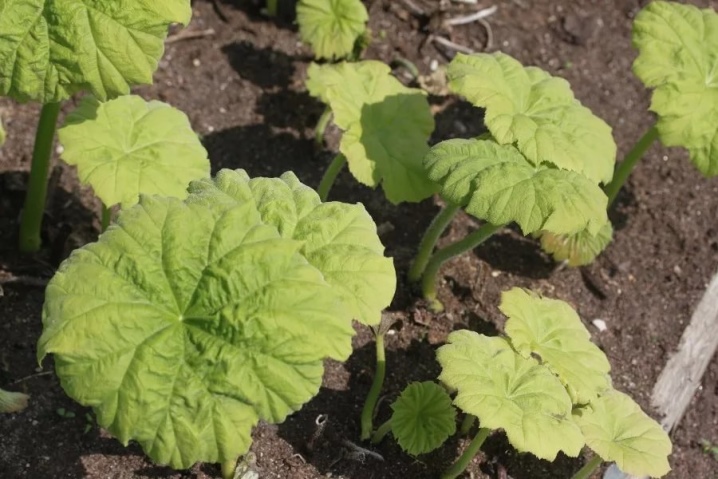
Due to its unpretentiousness, the flower feels good on all types of soil, but still prefers nutritious loams. When planting a flower, experts recommend using a nutrient mixture consisting of garden soil, peat, humus and river sand. Due to the presence of a superficial root system, the planting hole should not be deep, but very wide.
To prevent decay of the root system, experts recommend putting drainage material at the bottom of the hole, which can be expanded clay, small pebbles or broken brick.
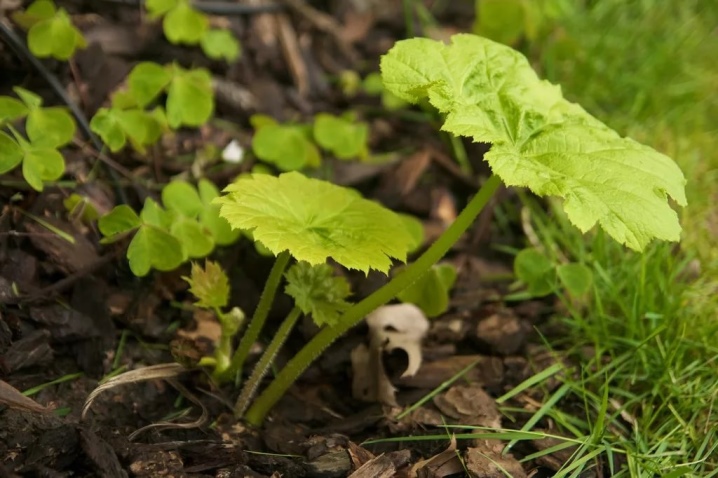
During planting, it is necessary to straighten the root system as much as possible and sprinkle it with a nutrient mixture, which must be carefully compacted near the flower. Planted plants must be watered abundantly with clean and settled water., and to prevent the root system from drying out, the entire area near the flower should be mulched with peat or chopped bark.
Novice gardeners should pay attention to the quality of the planting material, on which the beauty and health of the flower directly depends.
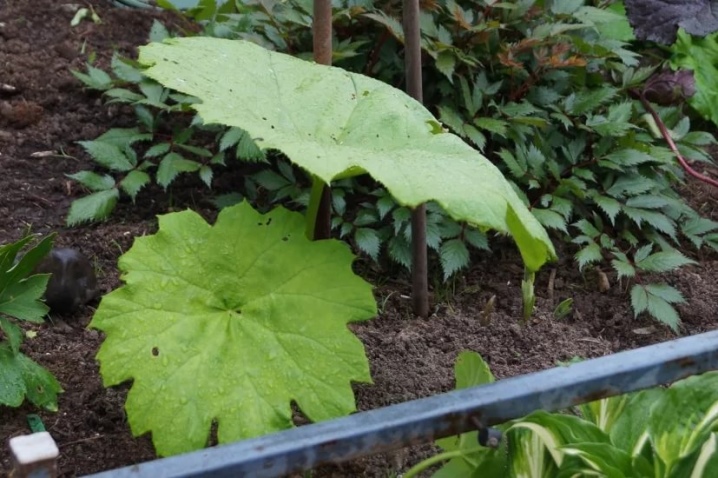
Healthy seedlings should have a strong root system, without signs of rot and fungal diseases. For maximum rooting, before planting, the roots of the plant must be soaked in a special solution that accelerates the growth and formation of the root system.
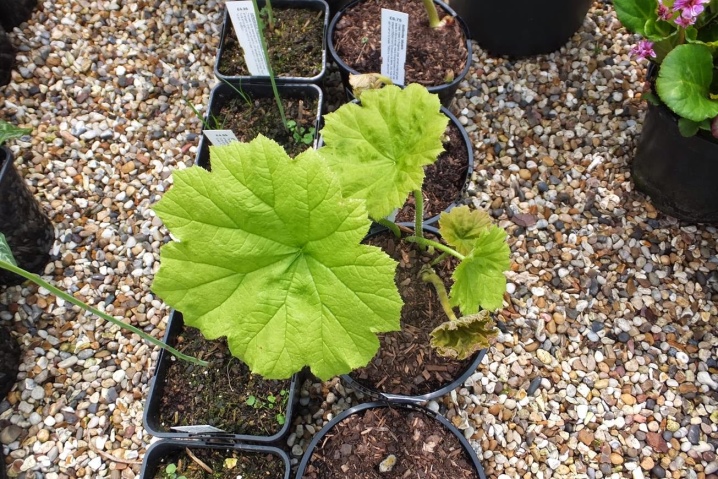
Care rules
Astilboides is an unpretentious plant that requires a minimum amount of attention., and caring for it consists of a set of standard procedures - watering, loosening the soil, top dressing, sanitary pruning and protection from pests.
Due to the fact that the flower loves moisture very much, experienced gardeners recommend regular watering, but you should not immediately add a large amount of water, the stagnation of which can provoke rotting of the root system.
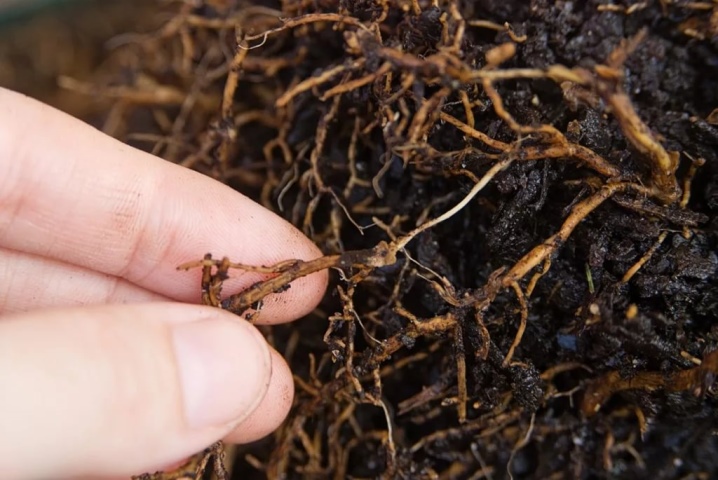
In the summer period, when there is little rainfall, the frequency of irrigation should be increased. For the most effective soil moistening, experts recommend using drip irrigation, which will allow the soil to maintain an optimal moisture level. The most favorable time for soil moistening is evening.
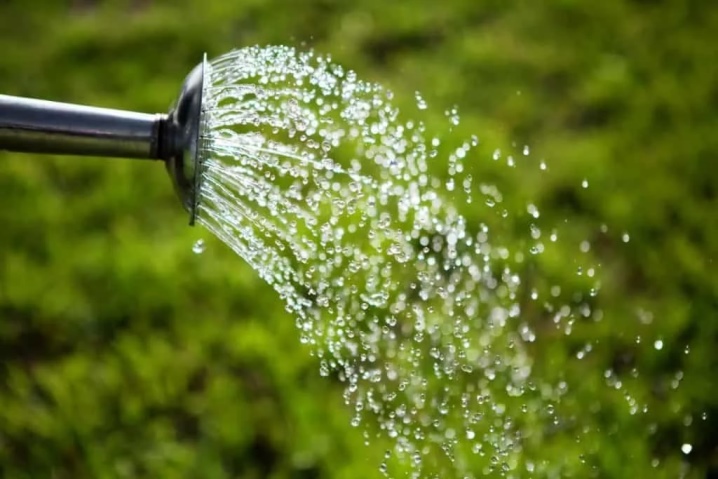
The flower responds well to the enrichment of the soil with organic matter and mineral complexes, which allow the plant to form large leaf plates and bright inflorescences. In the spring, the soil must be enriched with nitrogen, which will help form a large amount of green mass., but in autumn the flower needs mineral complexes with a high content of potassium and phosphorus.
These trace elements will help your pet to easily endure low temperatures and climatic fluctuations.
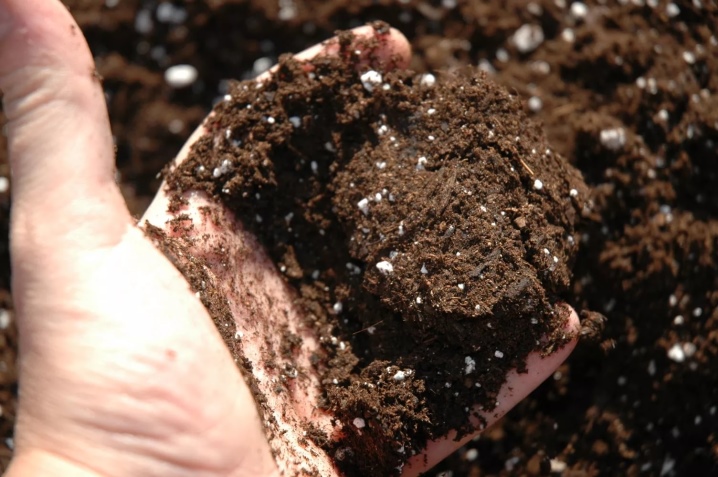
To enrich the root system with oxygen and timely remove weeds, experts recommend regular weeding of young plantations, but adult bushes do not need this manipulation due to dense greenery, which does not allow weed grass to germinate and develop.
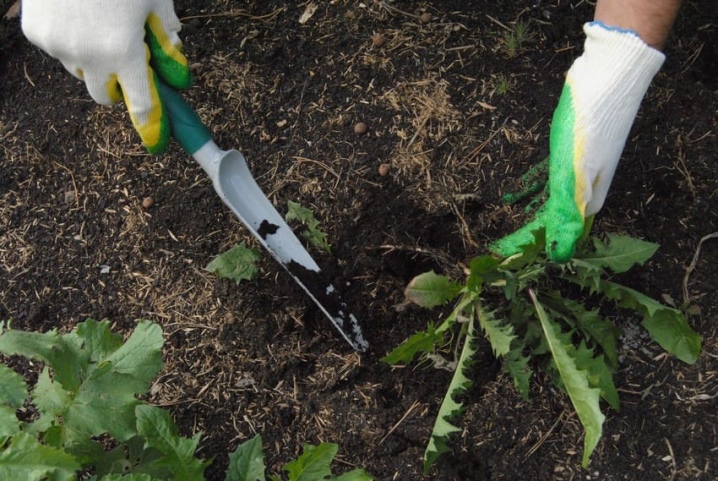
After the appearance of green leaves, it is recommended to carefully examine the plants and be sure to cut off all dry foliage. Often spring frosts damage young shoots, which subsequently begin to turn yellow. The spoiled leaves must also be removed so that healthy and beautiful leaf plates appear in their place. This manipulation must be repeated in the fall. After flowering, you must cut off all dry stalks and yellow leaves.
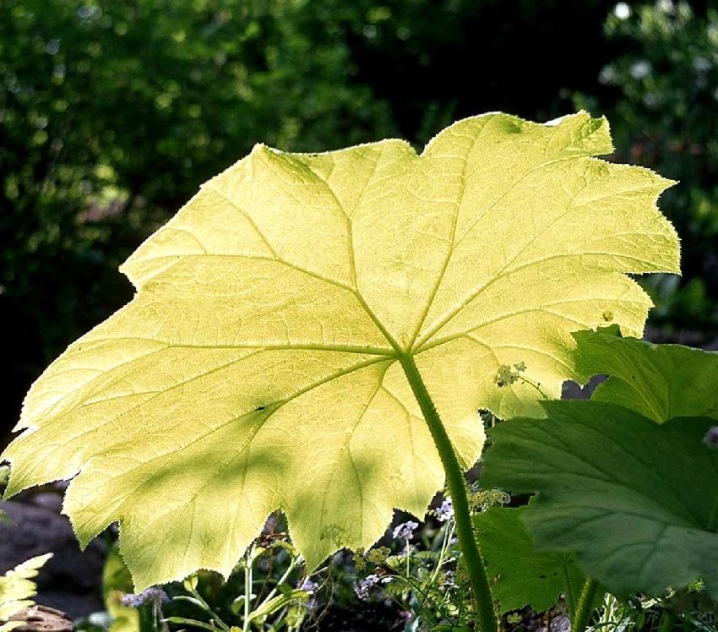
Due to the presence of large and dense leaves, which wither and fall off at the end of autumn, the flower does not need additional insulation before winter. The leaves create such a thick protective layer that the flower can easily endure even the most severe frosts., but if very little snow falls in winter, then experienced summer residents recommend creating artificial snowdrifts over the flower.
The winter hardiness zone of astilboides is the middle zone of Russia.
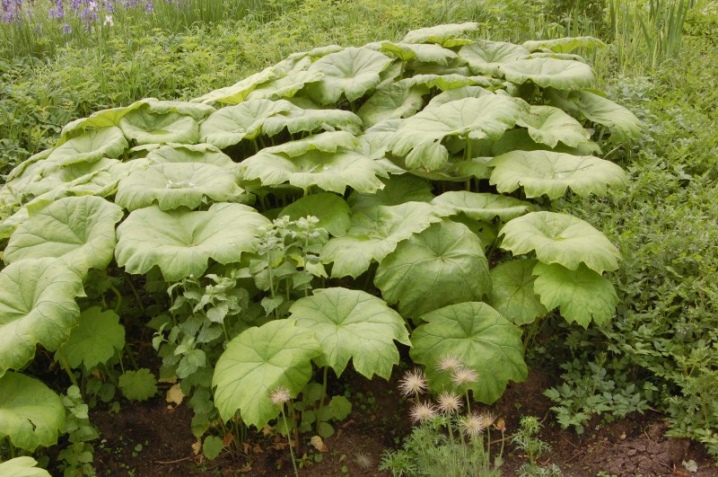
Reproduction methods
In order to get young plants, experts recommend using the following breeding methods:
- seminal;
- division of the rhizome.

The most popular breeding method is rhizome division.
It is he who love to use gardeners and summer residents. In order to obtain planting material, it is necessary to separate the lateral branches with buds from the mother rhizome at the beginning of spring or in the middle of autumn. This manipulation must be carried out with a special garden tool with a sharp blade.
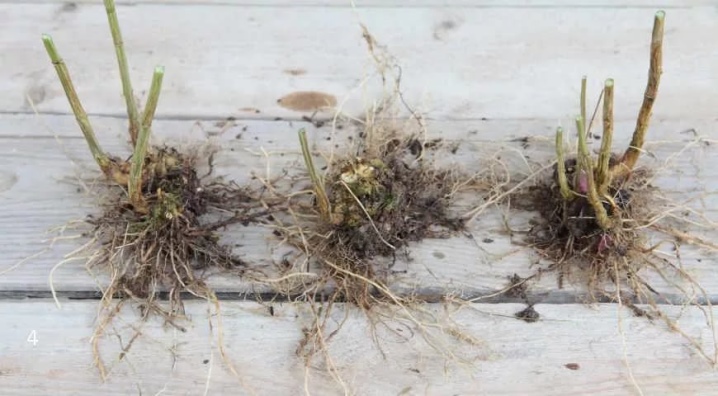
To obtain shoots, you can only use bushes that are more than 4 years old. If after some time after planting the seedlings they begin to bloom, then it is imperative to remove all the inflorescences in order for the plant to devote all its strength to rooting.
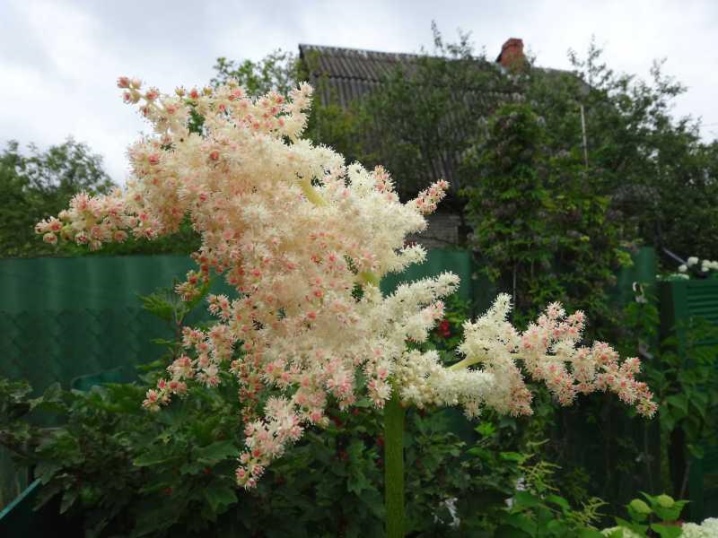
Seed propagation is also effective in producing a large number of young plants.
The most favorable time for sowing seeds is late autumn.
The sowing bed must be enriched with organic and mineral substances. The first shoots may appear in mid-spring. Despite their fragile appearance, they easily tolerate a pick and quickly take root in a new place. Young plants will be able to please their owners with beautiful flowers in 2 years.
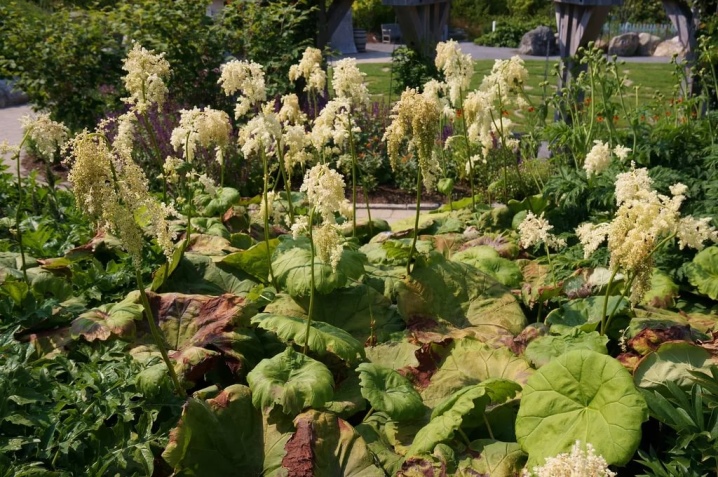
Some gardeners recommend sowing seeds in early spring, but they must winter in the refrigerator before sowing.
Light and nutritious soil should be used for sowing seeds. Experienced summer residents recommend not to deepen the seed, and after sowing, water it abundantly. The entire bed must be covered with plastic wrap, which can be removed only after the first shoots appear.
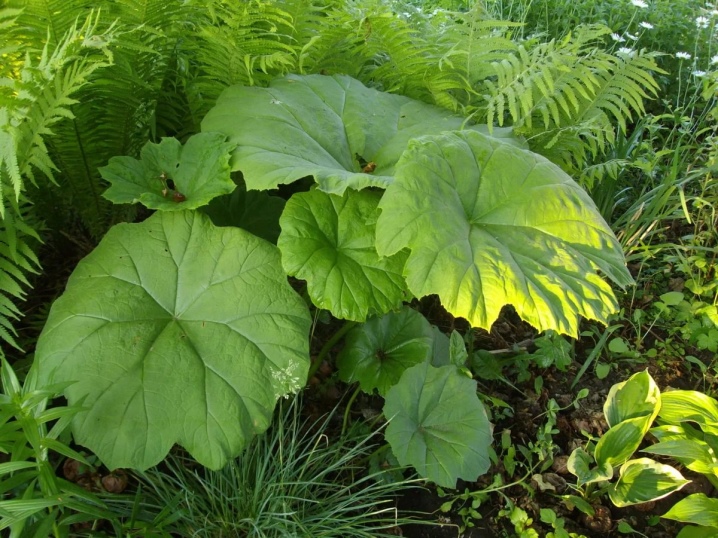
Diseases and pests
Despite its unpretentiousness and resistance to various diseases and dangerous pests, green spaces often suffer from slugs and snails, which feel comfortable in moist soil under the foliage. These insects can destroy all leaf plates, in which only coarse veins are left.
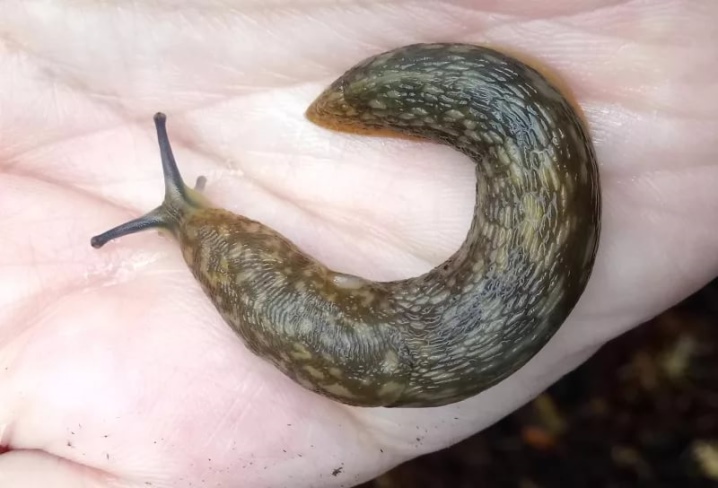
To prevent the appearance of parasites, experts recommend covering the soil under the flower with crushed eggshells, pine needles and used brewed coffee, which impedes the movement of insects and can damage their skin.
If a large number of pests are found, the plantings should be treated with special chemicals that will help get rid of parasites.
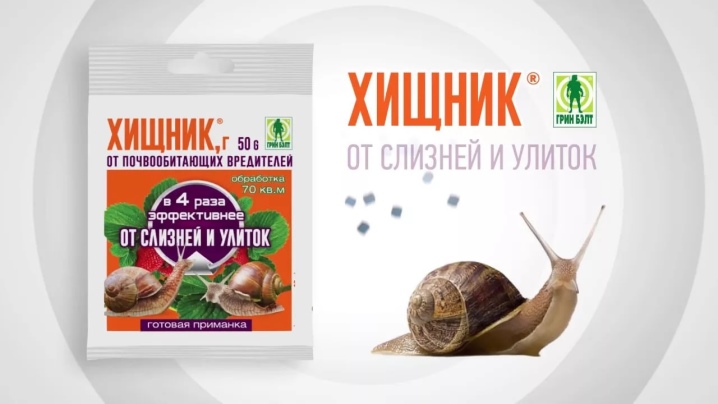
Popular methods of pest control have proven themselves well. Some summer residents use special traps with beer on their plots, falling into which snails cannot get out and die. Allspice, rosemary, cilantro and dried parsley will help repel insects. These spices just need to be scattered near the bushes and on the leaves.
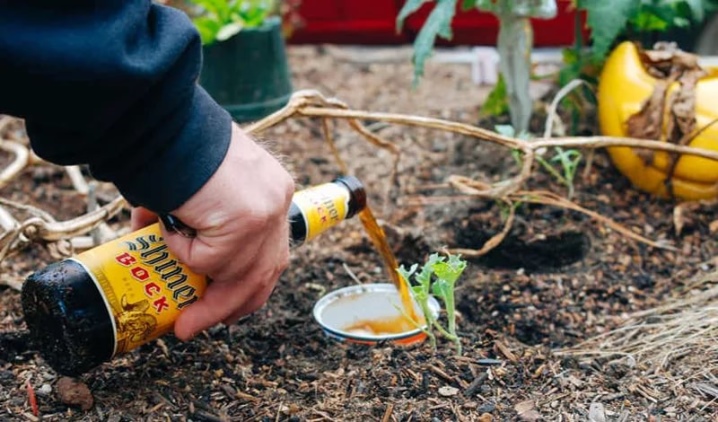
Examples in landscape design
Due to its usual appearance, unpretentiousness and large size, Astilboides is widely used in landscape design. The flower can be either an independent plant or a part of flower arrangements. This plant can be a good background for most flowers with contrasting color of leaves, as well as bright and saturated colors. Bushes of barberry, viburnum, wild rose, mountain ash and bubblegum, as well as forest anemone, geranium and zelenchuk look spectacular near astilboides.
To give a green composition of colors in spring, designers recommend planting such flowering perennials as primroses and crocuses near the flower.
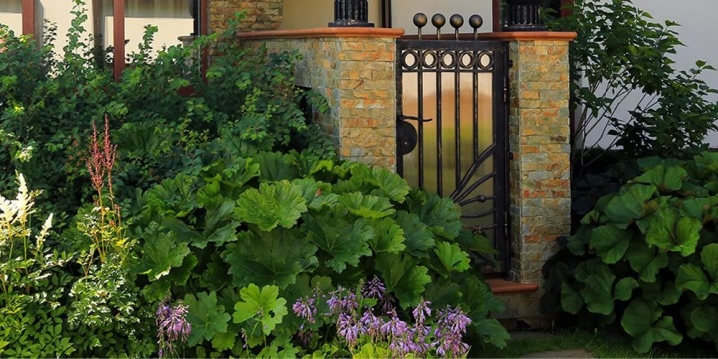
In many projects for decorating reservoirs, experts give preference to this particular flower, the huge leaves of which look very beautiful against the background of stones of various shapes, and the high humidity of the territory creates the most favorable conditions for its growth and development. The combination of a flower and sedge will create the effect of untouched wilderness.
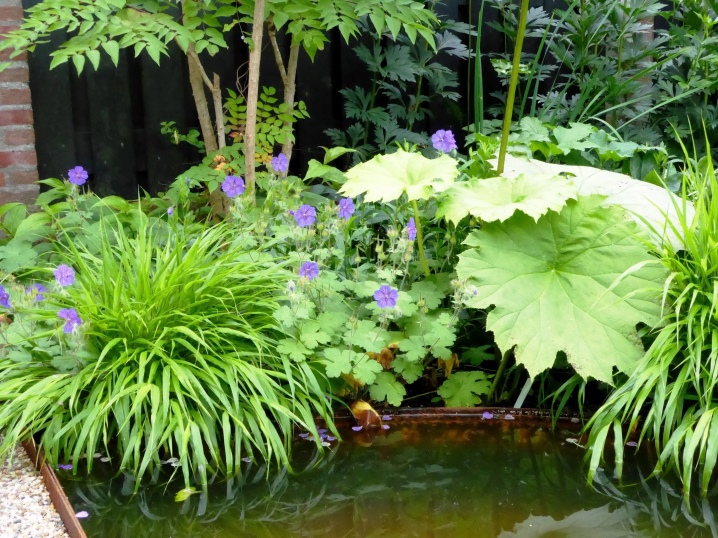
Single bushes will be able to decorate the shaded area near the house and outbuildings, as well as along long fences. If you plant a plant in large pots, then you can change the decor of the site, depending on the wishes of the owners.
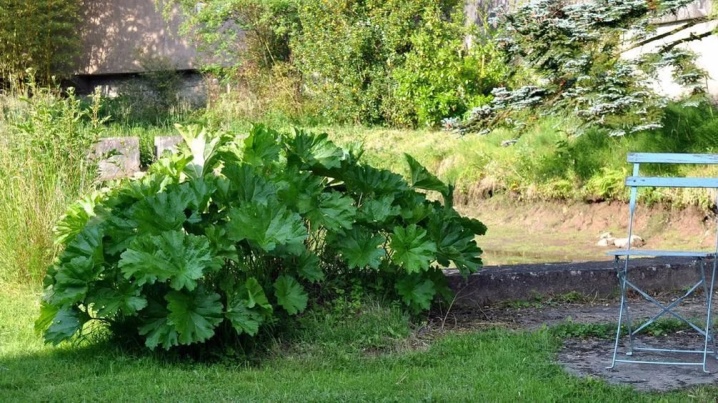
A beautiful and well-groomed garden plot is the pride of every owner. Each gardener tries to plant the most beautiful plants on his territory that will delight you throughout the year. The presence of buildings and outbuildings does not always make it possible to rationally use every corner. It is in this case that experts recommend paying attention to unpretentious plants that feel great in the shade.
One of the most striking representatives of this type of flowers is Astilboides lamellar.
Before purchasing this plant, you must carefully study its characteristics, planting features and the subtleties of care.

In the next video, you will get acquainted with the rules of growing astilboides and outdoor care.







































































































The comment was sent successfully.